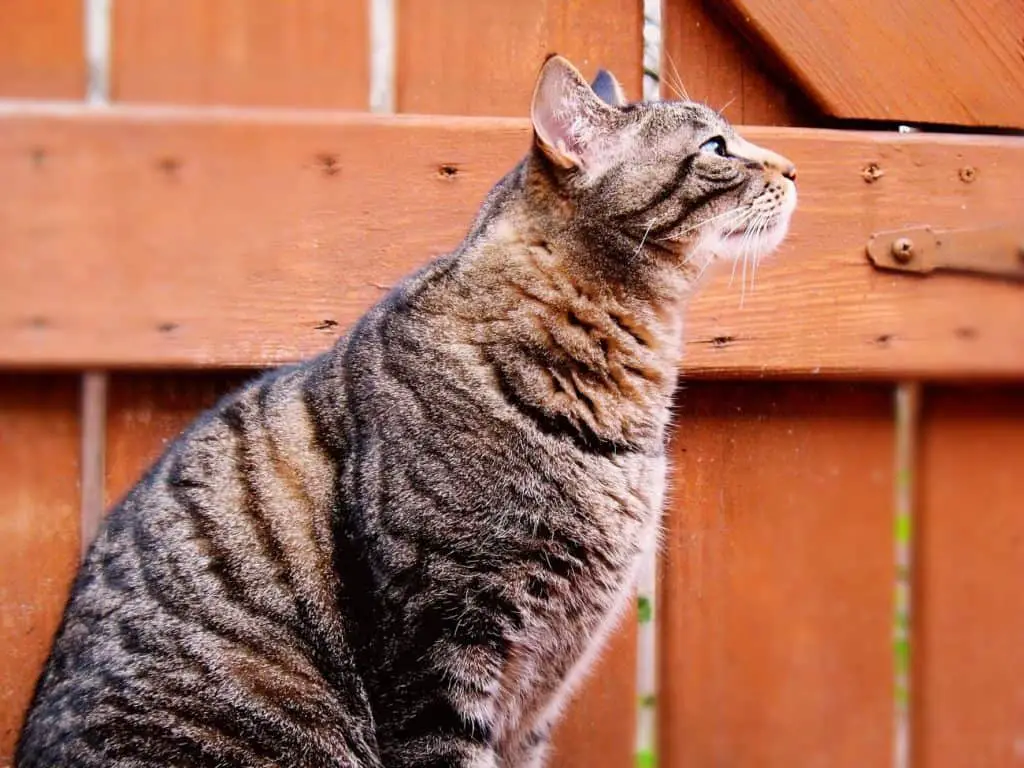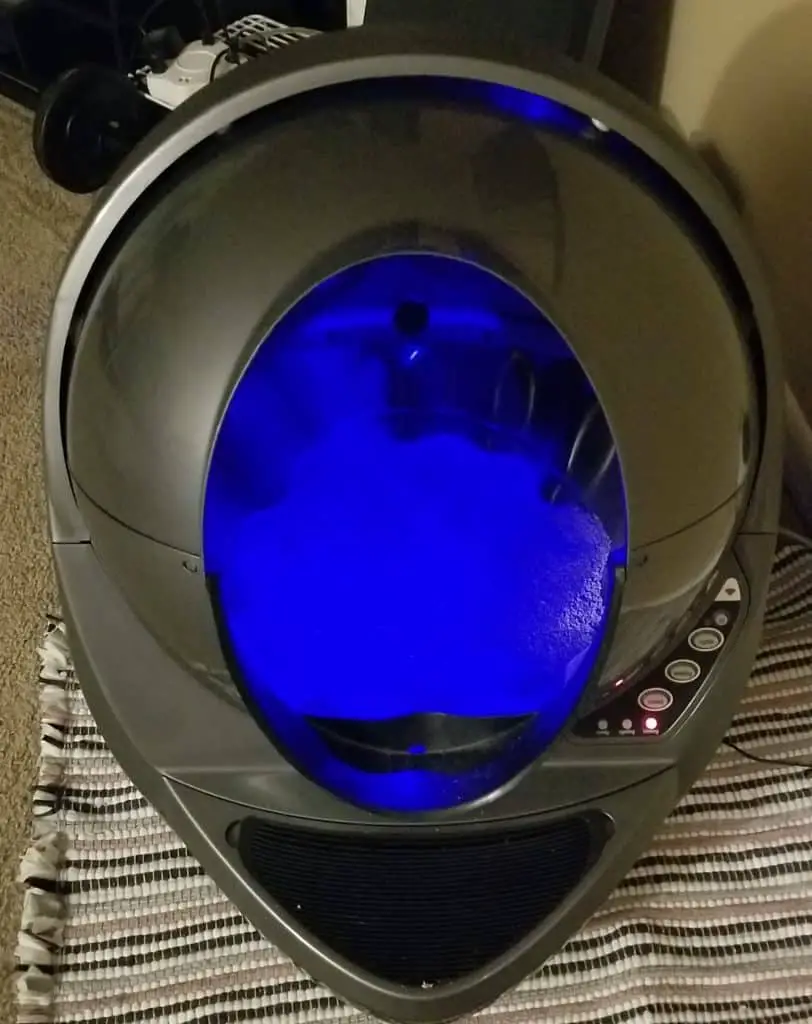More Meows is an Amazon Associate. As an Amazon Associate we earn from qualifying purchases. We may also earn commissions if you purchase products from other retailers after clicking on a link from our site.
Anyone who has witnessed a serious catfight knows how scary a yowling, spitting tornado of feline fury can be. Feral cats can be fierce when it comes to protecting their territory, and a cat’s teeth and claws are formidable weapons. Whether they break it off before it ends in the death of one of them depends on where the fight occurs.
Feral cats will seldom fight to the death as long there is an escape route. Cats are more interested in self-preservation, and fights are short-lived, even among feral cats. The real danger from catfighting comes from wounds getting infected, which could result in death.
This said, one cat may kill another if the fight occurs in an area where they are trapped and can’t escape. Cats tend to size each other up from a distance before engaging in biting and clawing and, being intelligent animals, will often avoid physical involvement altogether.
If you are wondering what the best products are for your cat, check out this article that will break down all my recommendations for you: Things To Buy For A Cat Right Now!
Do Feral Cats Fight To The Death?
No, in the majority of circumstances, feral cats aren’t going to fight to the death. Most violent interactions between feral cats will end with both cats alive, but they may be wounded. These wounds could be serious, so while the cat may live from the catfight, they may die from infected wounds.
Aggression between cats is usually the result of territorial infringements. Most cats will defend their home range against invasion by strangers. Amongst feral cats, this can mean they are protecting hunting areas and essential food sources.
Some cats are more assertive than others and may actively look for opportunities to extend their territory. Less confident cats may become targets of more dominant animals. A cat’s genetics, gender, and experience as a kitten may make them more or less aggressive to other cats.
Feral cats in a particular area may form groups because, contrary to popular belief, cats are relatively social animals. However, they may resent the presence of a cat intruder in their neighborhood. Unsterilized male feral cats may compete for unsterilized females.
Feral cats often exhibit an array of battle scars on their ears and faces. While they don’t usually fight to the death, they can die later due to infections that arise in their wounds.
How Do Feral Cats Act?

Feral cats act as they belong in the outdoors. They might show some recognition of a caregiver, but often they will run away from people in a heartbeat.
A feral cat is an un-owned domestic cat that lives outdoors and is wary of humans. A pet cat can eventually become feral if it is abandoned by its owner or poorly treated. It would rather live on the street than in an abusive home. A feral cat is usually considered to be a cat that can never be fully socialized. They consistently exhibit fear and avoidance behavior around people, no matter how well they know them.
Feral cats may accept food from humans but rarely allow physical contact. Feral cats can survive on their own without assistance. They remain distant and aloof and will often hide if people invade their space. In some neighborhoods, generations of feral cats can be found living in groups. They tend to come out after dusk to mate and hunt.
Stray cats are more approachable than feral cats and are likely to be pet cats that have been abandoned or gotten lost. If strays are left alone too long without human interaction, they can eventually become feral. This is especially true in neighborhoods where cats are routinely abused or chased by people.
Life of a Feral Cat
It is almost impossible to tame an adult feral cat to the point that it can live in a human home. They are effectively wild animals that feel stressed when they are confined to four walls. Feral cat colonies usually base themselves around the shelter or a consistent source of food.
There are misconceptions that feral cats have harsh, short lives and are disease-ridden. While it may be true that they live in vacant lots in cities, dodge people, dogs, and traffic, and eat out of the trash, feral cats need not live unpleasant lives. They are susceptible to the same diseases as owned cats.
Sterilization of feral cat colonies can significantly reduce fighting and stabilize the population. Many cat-lovers volunteer to monitor the feral cats in their neighborhoods and ensure that they receive veterinary care as needed.
Some non-profit organizations argue that it is kinder to euthanize a feral cat than let it be homeless. They may say that feral cats face infection, disease, and an endless cycle of pregnancies. Feral cats are also subjected to weather extremes and abusive treatment by people.
Obviously, most feral cats live outdoors, but do they want to live indoors? Check out my article on whether feral cats want to be indoors: Click Here.
Although a feral cat’s life can be short and face hardships, many cat lovers and other animal rescue organizations disagree with PETA. The Humane Society of the United States and the ASPCA, among others, say that a sterilized colony of feral cats can live healthy lives and that they keep common city pests like rats in check.
Any cat that lives outdoors is exposed to diseases such as rabies, feline AIDS, parasites, and feline leukemia, as well as predators like eagles and coyotes. It is estimated there are tens of millions of feral cats living in the United States.
Where do Feral Cats Live?
In 2011, researchers set out to track feral cats in the Urbana-Champaign area in Illinois by putting radio transmitters on forty-two of them. They discovered that feral cats wander far and wide, with the range of one male covering 2.1 square miles. Domestic cats do not travel nearly as far from home base.
Smithsonian Magazine referenced a study published in the Journal of Wildlife Management that showed that in winter, the feral cats preferred urban settings, farmland, and forests that offered more warmth and shelter. The scientists discovered that ferals were significantly more active than pet cats and spent 14% of their time running or hunting instead of only 3% for owned cats.
Two feral cats in the study were killed by coyotes, while researchers believed that other cats killed another four. By contrast, only one of the pet cats in the study died, and, ironically enough, it was killed by another cat.
How Fast do Feral Cats Multiply?
A female cat can have three litters of kittens every year, with each litter having between two and ten kittens. As a result, feral females spend most of their lives pregnant or nursing kittens. The population can explode in an extremely short space of time.
Feral cats can have many kittens, but do they abandon their young? Check out my article on the full truth on if feral cats abandon their kittens: Click Here.
Killing feral cats is not a solution. Apart from being downright inhumane, it serves no purpose because other feral cats move into the area. Also, any cats left from the original population will ramp up their breeding activities to fill the gap.
These days cat welfare organizations used a technique called Trap-Neuter-Return (TNR) to control feral cat populations. The cats are trapped humanely, examined by a veterinarian, vaccinated, treated for any infections, and then returned to the neighborhood where the colony lives.
To enable cat caregivers and welfare organizations to identify at a glance whether a feral cat has been sterilized, veterinarians clip a small part of the cat’s ear when it is spayed or neutered. These days many caring people support feral cat colonies by feeding them, building shelters, and keeping an eye out for cats that need medical attention.
The numbers in a sterilized cat colony will drop over the years because the cats can no longer breed. TNR costs less than trapping and killing cats. Part of the reason is that cat-lovers are prepared to volunteer their time and other resources to care for feral cats in their natural environment.
With regular caregivers, a feral cat can live as long as ten years. However, they may only live for two or three years in an unsympathetic environment if they don’t die as kittens.
Are Feral Cats A Problem?
Feral cats have been known to attack humans and their pets, but generally speaking, a well-managed colony poses no threat. Most feral cats are fearful of people and won’t come near them.
Unless you know what you are doing, it is not recommended that you try to trap a feral cat. You and the cat could get hurt if you make a mistake. Instead, contact your local cat welfare society or animal rescue organization to help a feral cat.
Never try to grab a feral cat or make sudden threatening movements towards it. Some ferals will allow a familiar human to come close enough to touch them, but this is rare. Your unsterilized female pet cat may attract unsterilized feral males, so it is advisable to make sure that all your pets are spayed or neutered.
Feral cats have developed a negative reputation over the years, and some cat lovers prefer to describe them as free-roaming cats rather than feral cats. Others, like the ASPCA, refer to them as “community cats.”
Sterilization eliminates the most common nuisances posed by feral cats, such as spraying urine, excessive noise, and fighting. Spayed cats have a lower risk of ovarian, uterine, and breast cancer, while neutering males prevent testicular cancer and lower the risk of injuries and infections caused by fights.
Conclusion
Feral cats are misunderstood members of the community. They don’t usually fight to the death and are not bloodthirsty warriors. Ferals deserve to be treated with compassion and respect, just like any other wild animal. TNR programs have convincingly shown that they can live in our neighborhoods without being a nuisance.
If you enjoyed these articles, please check out a few more:
- Do Feral Cats Purr? Quick Reasons You Need To See: Click Here.
- Do Feral Cats Meow? Remarkably Interesting Reasons: Click Here.
- Do Feral Cats Drink Water? (Most Valuable Insights): Click Here.
Here are some of my favorite cat products
In addition to checking out some other More Meows articles, I hope you’ll check out some of my favorite cat products as well. These are affiliate links, so if you end up using them, I’ll get a commission at no extra cost to you. These are the products I really do find most helpful.
Litter Box: I started out with normal, traditional litter boxes for my cat. Then, I tried this automatic litter box on Amazon (affiliate link), which helped reduce the litter upkeep. Finally, I am now a believer in the Litter-Robot 3 Connect on Amazon (affiliate link). This robotic litter box is not for everyone based on the price tag, but for me the benefits (very little upkeep, works efficiently, clean, mobile app) far outweighed the cost.

Cat Tree: I have purchased a couple of this Amazon Basics Cat Tree on Amazon (affiliate link). My cat spends a lot of time on and around this cat tree, which I position near my sofa. She uses the scratching posts on this cat tree multiple times a day, which means she is not scratching the sofa instead.
Cat Water Fountain: I love this cat water fountain on Amazon (affiliate link). There are three main benefits to having a water fountain like this for your cat. The first benefit is that it keeps water running so that your cat doesn’t need to drink still water. The second benefit is that it filters the water. The third benefit is that it will keep your cat hydrated!
